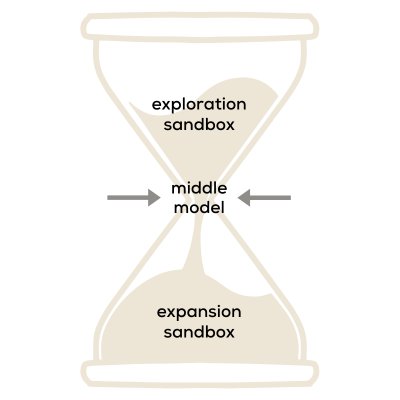For over 25 years, I’ve had a laptop as a near-constant companion.
I have mixed feelings about this.
What else could I have been doing if I wasn’t tethered to this device? And yet, I’m grateful for what I’ve been able to do because of it.
Having a business I can run from my laptop is pretty amazing.
I mean, isn’t it crazy that we can work with people all over the world and get paid with a few clicks?
All you really have to do to get started is let your friends, family, and acquaintances know that you’re in business. And with an internet connection, you can do pretty much everything you need to serve your clients.
It’s good to take action and not overthink things, but that’s only going to take you so far.
If you’re like me and most of the entrepreneurs I’ve worked with, you’ll sign up a few clients but you still need more to make the money you want.
Finding new clients is all you think about.
This is where things get frustrating.
There are so many damn options and approaches.
Social selling, inbound organic outreach, cold outreach, content marketing, platform-specific lead generation, done-for-you, done-with-you, DIY, and on and on.
It’s tough to figure out what to do.
So you try a bunch without giving much thought to whether they make sense for the kind of business you want. Because all that matters is getting clients to stay afloat.
This is short-term thinking.
And it’s going to bite you in the ass if you don’t also think more strategically.
Marketing and sales tactics can give you a boost, for sure. But if you don’t take the time to think about the long-term, your business may not last. It may not grow and be maintainable for as long as you want. And it may not be a business you end up wanting at all.
Your Middle Model
In my workshop this past Wednesday, I shared the idea of creating your middle model. (Don’t you just love a good alliteration?)
Your middle model is how you’ll approach building your business once you’ve gone through the exploration phase. When you know it’s time to be more intentional about what methods you’re ready to commit to for the next few years.
It’s the middle because this is where you get super focused and commit to one strategy that will get you to a place of expansion – whatever that looks like for you.

Even if your revenue hasn’t been steady and you aren’t making the kind of money you want to be making yet, it’s important to figure out how you want to do it.
How do you want to make more money?
How do you want to work with clients?
How do you want to feel in your business?
A strategy answers these questions.
The strategy that shapes your middle model is going to help you decide what your business will look like in the coming months and years.
A strategy is not a plan.
A strategy is an approach to reaching your goals.
A plan is the steps you take to reach those goals.
A strategy provides a focus for how you will show up, market, sell, and deliver in a way that’s in line with your vision, preferences, values, and strengths.
My strategy is informed by my core business values:
connection, curiosity, boldness, joy, and prosperity.
So my focus will be on relationship marketing, meaningful sales, and increased visibility.
From here, I craft a plan to help me reach my goals.
This is where specific tactics come in.
With a strategy, you can be more intentional about your tactics.
When everything is moving in a direction that feels right for you, you’ll see how much things start to shift and work in your business.
